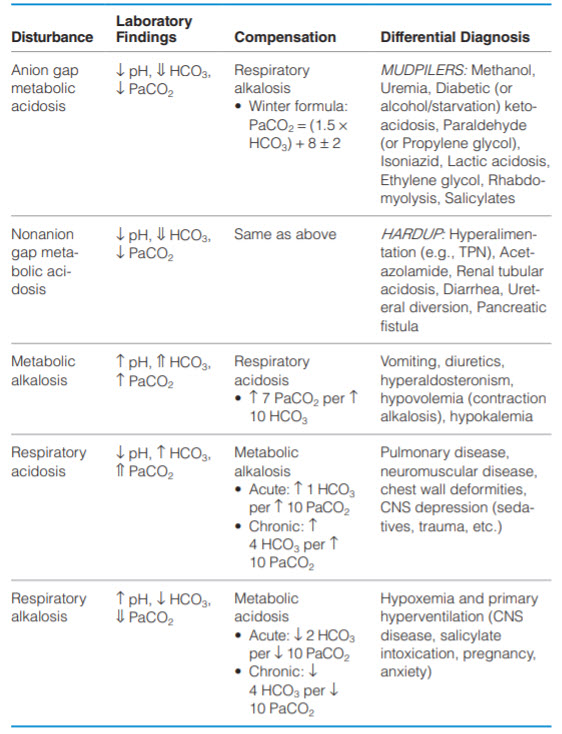Question 36#
A 62-year-old woman with a long history of COPD presents to her physician for routine laboratory tests. She is currently healthy without any recent illnesses or changes in medications. Her laboratory values show a serum bicarbonate level of 36 mEq/L.
Which of the following best represents the natural compensatory response to this patient’s acid/base disorder?
A. Increased reabsorption of HCO3 in the nephronB. Decreased reabsorption of HCO3 in the nephron
C. Increased respiratory rate and/or tidal volume
D. Decreased respiratory rate and/or tidal volume
E. Increased HCO3 absorption in the GI tract
Correct Answer is A
Comment:
Increased reabsorption of HCO3 in the nephron. An elevated HCO3 is consistent with either a metabolic alkalosis or a respiratory acidosis. In this case, the presence of a chronic lung disease like COPD makes the likely diagnosis chronic respiratory acidosis. It is important to know the body’s response to acid/base abnormalities (Table below); however, the response will never completely correct the pH. If the pH is normal, then suspect a mixed acid/base disorder. The simplest way to view compensatory mechanisms is to think of renal compensations for respiratory problems and vice versa. For chronic respiratory acidosis, then, the compensation will be an increase in HCO3 reabsorption in the nephron (as well as an increase in the excretion of titratable acid and NH4+ ). (B) Chronic respiratory alkalosis will have the opposite effect, with a decrease in HCO3 reabsorption. (C, D) In response to metabolic acidosis, the body will increase ventilation (respiratory rate × tidal volume); in response to metabolic alkalosis, the body will decrease ventilation. If a metabolic acidosis persists, the body’s kidneys will also increase the excretion of titratable acid and NH4+ . (E) The GI tract is not a major contributor to acid/base homeostasis.
Overview of Acid/Base Problems:
